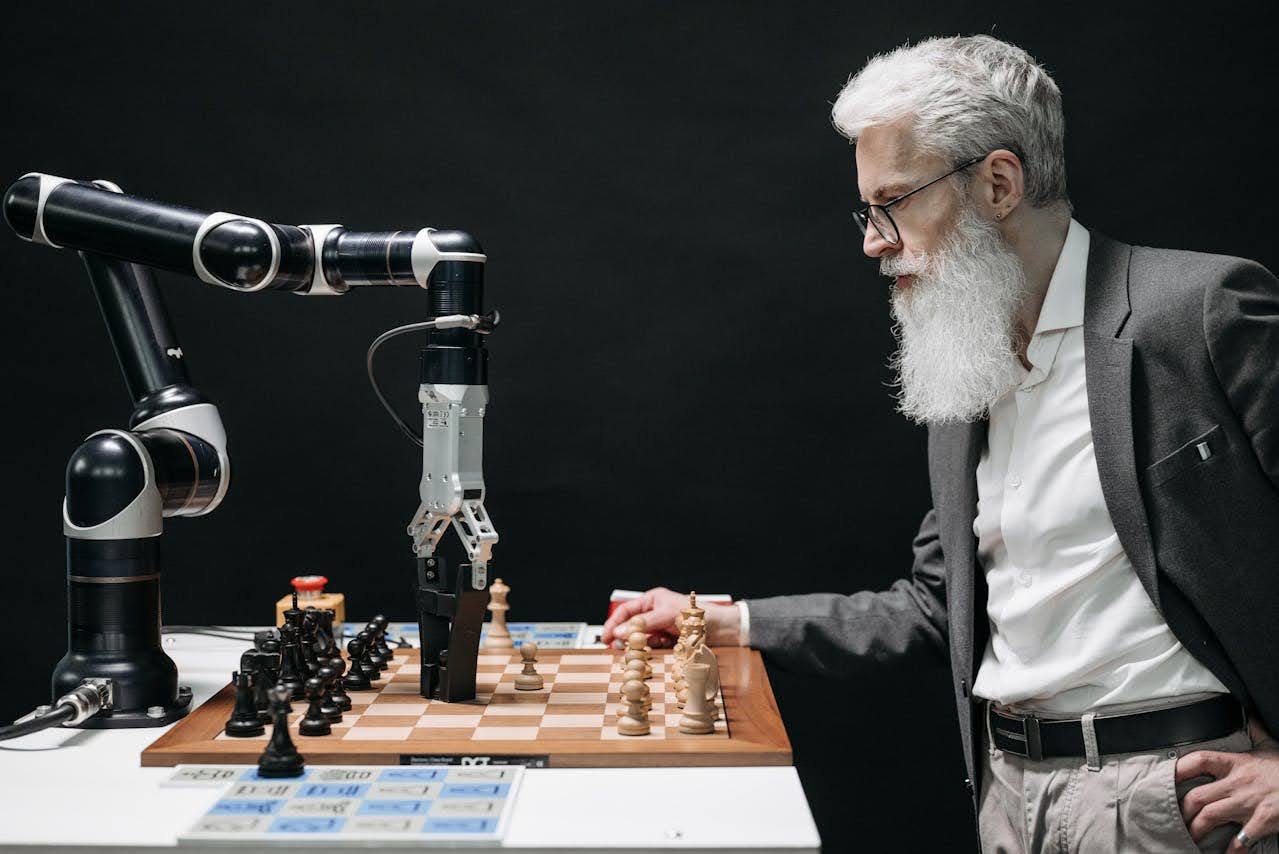Artificial Intelligence (AI) is a term we often hear today, but what does it actually mean? Many associate it with movies and robots, but it is much more than that.
It’s a technology that enables machines to learn, think, and adapt, much like humans do.
To simplify things, we’ll start with what AI really means and then compare it to the old, reliable technologies we’ve used so far. We’ll talk about how it learns, thinks, and solves problems like a genius.
Finally, we’ll take a peek into the future – What wonders AI might bring and how it will shape the world ahead.
Sounds interesting? Let’s dive in!
AI and traditional technology

Imagine a robot playing chess. In a traditional approach, this robot would be programmed to follow predefined rules and strategies.
Its task would be straightforward: analyze the positions on the board and make decisions based on the programmed instructions. While it could be an exceptional player, its ability wouldn’t change. It would play chess exactly as the programmer taught it, without the capacity to adapt or learn from each game.
On the other hand, a robot using artificial intelligence would be entirely different. Instead of relying solely on preset strategies, this robot would analyze its experiences and learn from each game. Every chess match would become a lesson.
Based on past moves, it could develop new strategies, adapt to its opponent’s style, and make better decisions. Essentially, an AI robot plays chess like a true master – not just following rules but thinking outside the box.
This analogy perfectly illustrates the difference between traditional technology and AI. While classic machines are confined to their programming, artificial intelligence allows machines to grow and evolve.
As a result, AI systems can recognize patterns, make assessments, and solve problems in ways traditional technology cannot.
When thinking about AI, imagine a chess-playing robot that not only plays the game but continually improves over time.
AI and LLM

Artificial intelligence encompasses a broad range of technologies that enable machines to learn and adapt. Within this broader framework lies the concept of large language models (LLMs), which specialize in processing and generating human language.
While AI can include various applications, from image recognition to autonomous vehicles, LLMs focus specifically on understanding and generating text. Models like ChatGPT use vast datasets to learn linguistic patterns and contexts, enabling them to hold conversations, answer questions, and even create written content.
The distinction between AI and LLMs lies in their specificity. AI is a broad term covering all technologies that allow machines to perform tasks requiring human-like intelligence. LLMs are a subset of AI, concentrating on language and communication.
The application of artificial intelligence

The popularity of artificial intelligence has significantly increased with the advent of ChatGPT and similar chatbots. However, it is not a new concept.
This technology has been in use for quite some time in various forms. For example, search engine algorithms like Google use AI to analyze and rank web pages, helping users find relevant information more quickly and efficiently.
Social media platforms like Facebook and Instagram also utilize artificial intelligence to personalize user experiences. These systems analyze user behavior patterns and preferences to offer content that is most likely to engage them, increasing user retention and interaction.
Even Nikola Tesla explored the idea of AI a century ago.
AI is applied across different industries, including healthcare, finance, and transportation.
In healthcare, algorithms can analyze medical images and assist in diagnosing diseases. AI also predicts market trends and detects fraud – very useful for the the financial sector.
The use of artificial intelligence in transportation is on the rise. Autonomous vehicles rely on intelligent systems for real-time navigation and decision-making.
⭐ It’s worth noting that according to a study by Vention, as of 2023, 92.1% of companies reported benefiting from AI technology, compared to 48.4% in 2017, clearly demonstrating an upward trajectory for the industry.
The emergence of ChatGPT has brought a new dimension to the application of AI technology, enabling users to interact with machines through natural language. This can be seen as “AI for the masses,” requiring only a computer or smartphone and an internet connection (the same things you’re using to read this article).
This type of interaction opens doors to numerous applications, from customer support to education and entertainment. AI chatbots have become indispensable tools in business, allowing companies to improve services, optimize processes, and reduce costs.
The future of AI technology
The future of artificial intelligence appears extremely promising, with expectations for its evolution and applications growing daily. As technology advances, AI will become increasingly integrated into our everyday lives, redefining how we communicate, work, and learn.
Additionally, the development of more advanced and capable models, such as next-generation LLMs, is expected. These models will enable more complex and natural interactions, unlocking new possibilities in creative industries like writing, music, and art.
However, with all these advantages come challenges. Ethics in development is becoming an increasingly important topic, raising questions about privacy, algorithmic bias, and job displacement. As technology evolves, it is essential to establish guidelines that ensure the responsible use of AI.

